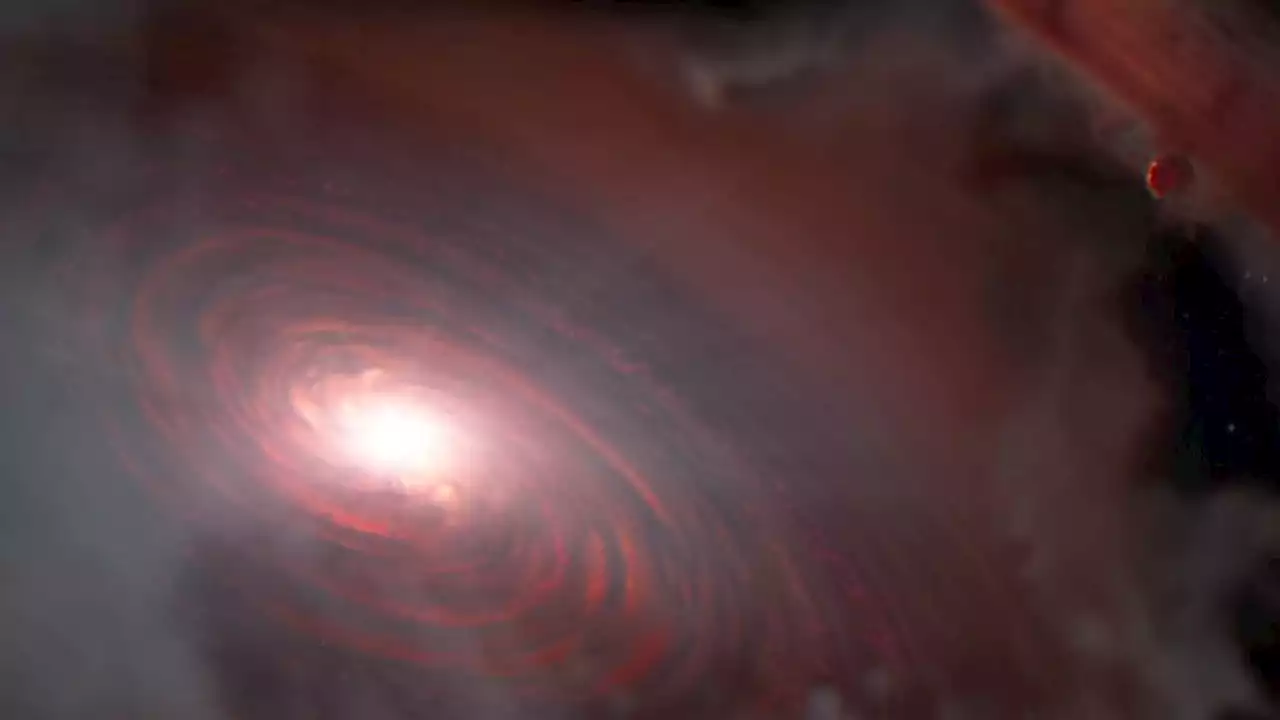Astronomers have discovered water vapor in the planet-forming region of a star, which could help shed light on where Earth's water came from.
One of the big open questions about Earth and how life formed here is where the planet’s water came from. Water is essential to life as we know it, but many scientists think that water did not originally form on Earth — rather, it may have been carried here by asteroids. Recently, though, astronomers have discovered water vapor in the planet-forming region of a star, suggesting that future planets which form here might have access to water right from the start.
“We’ve seen water in other disks, but not so close in and in a system where planets are currently assembling. We couldn’t make this type of measurement before Webb,” said lead author Giulia Perotti of the Max Planck Institute for Astronomy in a statement. Scientists are interested in where this water came from and how it was able to survive the turbulent environment close to the star. The young star gives off ultraviolet light, which usually destroys water molecules. In this case, the water vapor was among dust and other material which may have protected the water molecules and acted like a shield.
Norge Siste Nytt, Norge Overskrifter
Similar News:Du kan også lese nyheter som ligner på denne som vi har samlet inn fra andre nyhetskilder.
 James Webb telescope discovers water in nearby planetary systemAstronomers say they've discovered water vapor near an old star with a planet-creating disk. No planets were found to be forming near its inner disk.
James Webb telescope discovers water in nearby planetary systemAstronomers say they've discovered water vapor near an old star with a planet-creating disk. No planets were found to be forming near its inner disk.
Les mer »
 Webb telescope spots water in a nearby planetary system | CNNAstronomers have detected water vapor swirling close to a nearby star — indicating that the planets forming around it might someday be able to support life
Webb telescope spots water in a nearby planetary system | CNNAstronomers have detected water vapor swirling close to a nearby star — indicating that the planets forming around it might someday be able to support life
Les mer »
 James Webb telescope discovers water in planetary system near our ownAstronomers say they've discovered water vapor near an old star with a planet-creating disk. No planets were found to be forming near its inner disk. MORE ⬇️
James Webb telescope discovers water in planetary system near our ownAstronomers say they've discovered water vapor near an old star with a planet-creating disk. No planets were found to be forming near its inner disk. MORE ⬇️
Les mer »
 Seeing with neutrinos: how astronomers are mapping the cosmos without lightA vast telescope buried beneath Antarctica has captured high-energy neutrinos from the Galactic Centre, ushering in a new era for observing the Universe.
Seeing with neutrinos: how astronomers are mapping the cosmos without lightA vast telescope buried beneath Antarctica has captured high-energy neutrinos from the Galactic Centre, ushering in a new era for observing the Universe.
Les mer »
 Astronomers Find a Rare 'Einstein Cross'Astronomers have found a rare 'Einstein Cross' gravitational lens. It shows four mages of a distant galaxy in the early universe.
Astronomers Find a Rare 'Einstein Cross'Astronomers have found a rare 'Einstein Cross' gravitational lens. It shows four mages of a distant galaxy in the early universe.
Les mer »
 Astronomers spot 'horns' coming out of a comet after sudden massive outburstThe comet, which takes up to 71 years to complete one cycle around the Sun, has recently shown some odd behavior.
Astronomers spot 'horns' coming out of a comet after sudden massive outburstThe comet, which takes up to 71 years to complete one cycle around the Sun, has recently shown some odd behavior.
Les mer »
